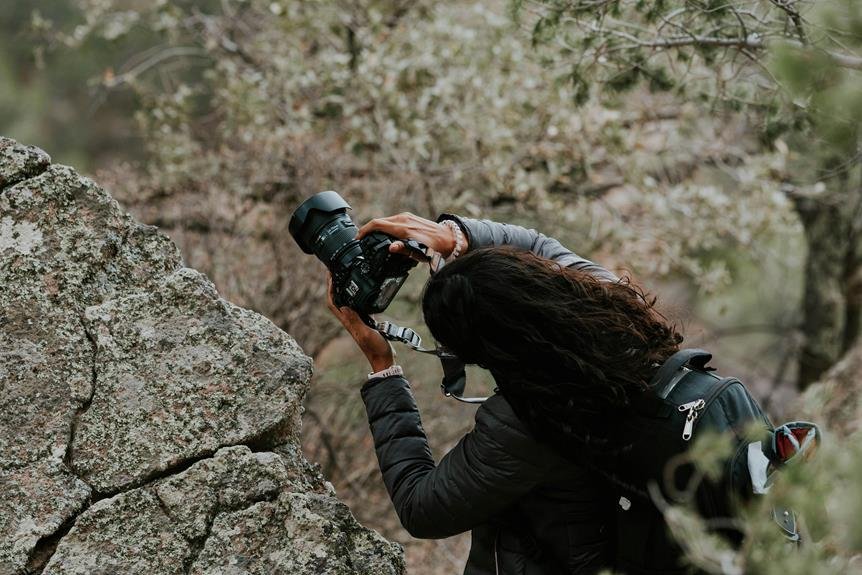Backup Camera Troubles? Troubleshooting Tips
Experiencing backup camera issues? First, rule out signal interference from wireless devices or faulty wiring. Make sure no electronics disrupt the signal and check for damaged wires. Then, inspect your power supply and connections by checking voltage levels and securing cables tightly. Clean the camera lens with a soft cloth to optimize performance. Test and confirm your wiring connections, as essential functionality is important. Verify display settings for resolution and brightness adjustments. For more tips to efficiently troubleshoot and restore your camera system's functionality, explore further solutions to keep your backup camera working smoothly.
A Quick Overview
- Check for signal interference from wireless devices or faulty wiring.
- Ensure power supply meets camera requirements and connections are secure.
- Clean camera lens to remove dirt and maintain optimal performance.
- Test wiring for damage, voltage, and signal continuity.
- Verify display settings for correct configuration and adjust as needed.
Common Backup Camera Issues
When troubleshooting backup camera issues, identifying common malfunctions becomes crucial for effective resolution. Camera malfunctions often stem from signal interference, causing distorted or no image display.
Signal interference can result from various sources like wireless devices or faulty wiring. To address camera malfunctions due to signal interference, make sure there are no electronic devices nearby emitting frequencies that could disrupt the signal and check for any damaged wiring connections.
Check Power Supply and Connections
To guarantee proper functionality, thoroughly examine the power supply and connections of your backup camera system. Check voltage levels to make sure they meet the camera's requirements.
Reconnect cables securely to eliminate any loose connections that may disrupt the power supply. Adequate power and solid connections are essential for your backup camera to operate effectively.
Inspect Camera Lens for Dirt
Inspect the camera lens for dirt buildup and make sure it's clean for best performance. A clean lens is crucial for optimal camera alignment and image clarity.
Dirt or debris on the lens can obstruct the view and affect the quality of the camera feed. Use a soft microfiber cloth to gently clean the lens surface, ensuring there are no smudges or marks that could impact the camera's functionality.
Test Backup Camera Wiring
Guarantee that all backup camera wiring connections are secure and free of damage to troubleshoot potential issues effectively.
Check voltage to confirm power is reaching the camera properly.
Verify signal continuity by testing the wiring for any breaks or malfunctions.
If necessary, use a multimeter to measure voltage levels.
Properly functioning wiring is essential for the backup camera to operate correctly, so make sure everything is in order before moving on to other troubleshooting steps.
Verify Display Settings
Check the display settings on your backup camera system to make sure they're configured correctly for best performance.
Verify resolution adjustment and contrast calibration for the most favorable image quality.
Confirm proper display orientation and adjust brightness settings as needed.
Incorrect settings can lead to poor visibility and image quality. Take a moment to fine-tune these settings to enhance the functionality of your backup camera system.
Reset Backup Camera System
To effectively address backup camera issues, consider resetting the backup camera system to troubleshoot and potentially resolve any persistent problems. Performing a factory reset can help in troubleshooting steps for various camera malfunctions.
To do this, locate the reset button on the camera or refer to the user manual for specific instructions. A factory reset can recalibrate the system and often resolves common issues, providing a fresh start for troubleshooting.
Address Interference Problems
If encountering interference problems with your backup camera system, consider adjusting the positioning of the camera to minimize signal disruptions. Interference troubleshooting involves ensuring the camera isn't placed near other electronic devices emitting frequencies that could interfere.
Additionally, check for any loose connections or damaged wiring that might be causing signal disruptions. Properly positioning and maintaining the camera system can help reduce signal disruptions for clearer visibility while reversing.
Seek Professional Assistance
When troubleshooting backup camera issues, seeking professional assistance may be necessary for complex signal disruptions or technical problems beyond your expertise.
- Professional Expertise: Trained technicians can diagnose and resolve intricate camera malfunctions.
- Specialized Tools: Professionals have advanced equipment for accurate troubleshooting.
- Warranty Consideration: Seeking professional help may prevent voiding any existing warranties.
- Safety Assurance: Guarantee proper installation and functionality for peak performance.
Frequently Asked Questions
How Do I Know if My Backup Camera Needs to Be Replaced?
If your backup camera displays lens condensation or intermittent image, it might need replacing. Check for wiring issues too. For clearer vision and safe reversing, consider a professional inspection to determine the best solution.
Can Extreme Weather Affect the Performance of My Backup Camera?
Extreme weather conditions like snowstorms can impact your backup camera's functionality. Cold temperatures may affect its performance. On the other hand, extreme heat can also lead to performance issues. Guarantee your camera is weather-resistant for best operation.
What Should I Do if My Backup Camera Display Is Flickering?
If your backup camera display is flickering, check the camera positioning for obstructions and the electrical connections for any loose wires. Adjust the angle for better visibility and make sure all connections are secure to resolve the issue.
Is It Normal for My Backup Camera to Have a Delay in Displaying the Image?
Yes, it is typical for a backup camera to have a slight delay in displaying the image. To troubleshoot delays, make sure proper wiring and connection. Check for interference or camera quality issues that might affect image display.
Can a Backup Camera Be Affected by Car Washes or Water Exposure?
Water damage from car washes or exposure can impact your backup camera. Regular car maintenance involves safeguarding sensitive electronics from moisture. Guarantee proper sealing and avoid high-pressure jets directly on the camera to prevent issues.







